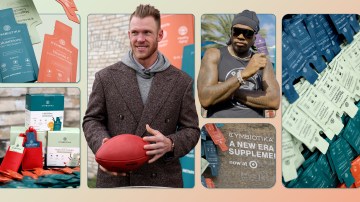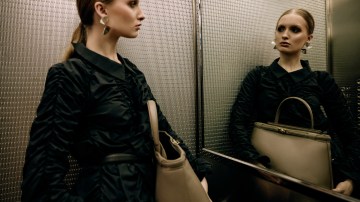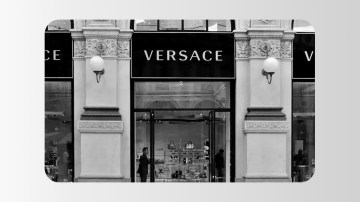This week, we talk to some experts in the modeling industry about how the rise of AI twins and non-professional models is affecting traditional models’ job prospects.
The last few months have seen a number of new fashion campaigns with something striking in common: no traditional fashion models featured in the imagery.
H&M had the most headline-grabbing campaign. Launched in March, H&M began including pictures made with AI-generated digital recreations of a real model in its social media posts and product imagery. In the same month, Puma released an ad campaign generated entirely by AI. Both ads have received criticism for removing the human element from creative work. Influencer Morgan Riddle called H&M’s use of AI twin models “shameful” for taking away job opportunities that could have gone to others.
But it’s not just AI that’s eating into potential modeling gigs. Brands are also turning to human alternatives. In March, cashmere brand Naadam released a new campaign called The Originals that forewent the use of traditional models and instead brought in 20 “real, unfiltered individuals,” as Naadam put it, to show off the product. Meanwhile, Skims has made it a brand trademark to use celebrities and household names like Paris Hilton, Olivia Munn and Lana del Rey as models in its campaigns.
So, between AI, celebrities, influencers and customers serving showing up in fashion shoots, where does that leave the traditional model?
The AI challenge
“AI technologies, such as virtual try-ons and AI-generated enhancements and digital models, are reshaping how brands approach campaigns and casting,” said Dale Noelle, founder of 14-year-old New York-based True Model Management, which represents models like Rubeiro Cornelio. “While these advancements can enhance efficiency and creativity, they also raise concerns about job security and the potential devaluation of human artistry. Models bring qualities — emotion, spontaneity and unique life experiences — that cannot be replicated by algorithms yet.”
A former model herself, Noelle has lived through years of changes to how the modeling industry works, including the new challenges models have to deal with today. Those range from having to build a social following in order to excel in the field to negotiating new contractual clauses around AI and 3D models made from their own bodies.
“The role of the traditional fashion model isn’t quite difficult yet, but we can assume it will be in the upcoming years as AI develops and brands looking to cut costs turn to digital options,” said Saige Thomas, executive producer of Texas Fashion Week and president of the Texas Fashion Industry. “Despite all of the options brands have now, we are still very much navigating the space of AI, licensing rights and usage limits that make sense for everyone involved.”
Noelle first had her body scanned by a fashion tech company in 1991, and the encroachment of new technology onto models’ job opportunities has only increased since then.
“AI is reshaping models’ careers. Some brands are using AI to save money and time, while others are focusing on real models for branding and storytelling,” she said. “I advise models to diversify skills, including motion capture and voice work, and to license their likenesses in all forms. We’re updating contracts for more detailed digital rights and image ownership, but we need specific laws to support our efforts. Technology has its place in fashion, but we must use it thoughtfully. Ethically used, AI can offer new income streams for models, such as licensing their images for royalties.”
Models to creators
One of the best ways to protect against the most negative effects of AI encroachment into modeling is through legislation and regulation. In response to H&M’s AI announcement, Paul W. Fleming, general secretary for the U.K.’s performing arts and entertainment trade union Equity, told CNN that the industry needs “the widespread adoption of AI protections in union agreements and legislation that protects workers’ rights.”
But until recently, modeling was a largely unregulated business. Despite the fact that much of the industry revolves around imagery of models, there was little to protect models from low pay and sometimes predatory behavior from people like former Elite Model Management head Gerald Marie. The Fashion Worker’s Act, passed in January of this year, made significant progress on that front, laying out ground rules about how modeling contracts can be written. Those laws apply to anyone who hires a model, even if it’s through an intermediary like an agency.
But Noelle said the Fashion Workers’ Act is still too vague in some of its wording, and more can still be done for models.
“In addition to the shortcomings of the current Fashion Workers’ Act, models and managers urgently need specific legal provisions,” she said. “Laws need to include clear repercussions and penalties for non-payment or slow payments. Late payments can cause significant financial stress for models, who often rely on these earnings to support themselves. There is also a pressing need for protection against individuals and companies fraudulently posing as model scouts. These scammers prey on aspiring models, often extracting money from them under false pretenses or subjecting them to dangerous situations. Legal measures should be enacted to identify, prosecute and deter such fraudulent activities.”
One of the best ways for models to protect themselves is to build a following of their own, multiple sources told Glossy. Another modeling agency, The Industry, launched a new division in December called The Industry Creators, specifically to help models grow their own social media audience. On True Model Management’s website, models are shown with their number of social media followers listed alongside their measurements and headshot.
“I believe it’s still a feasible career path, but it’s no longer just about signing to an agency and hoping for a call,” said stylist Nikki Venus. “Models now need to market themselves like content creators, stand for something and understand their value in a content-driven economy. It’s not about competing with AI; it’s about creating a space that AI can’t touch: real, lived-in identity.”
Stat of the week
Speaking of AI and content creation, new data from the app-linking software URLgenius shared with Glossy sheds light on how content creators are being affected by AI. Despite the fact that 59% of content creators surveyed by URLgenius said they were using AI to streamline their workflows, 33% expressed “concern that AI could compromise creativity,” showing the tension between innovation and authenticity.
Additionally, there are storm clouds over the creator economy. In the same survey, 52% of full-time creators reported decreased consumer spending, and 40% of part-time creators said they’re seeing shrinking brand commissions and smaller sponsorship deals.
Other news to know
- CaaStle is “one of the largest frauds in history,” according to a new lawsuit filed this week by the fashion holding company P180. P180 was co-founded by Brendan Hoffman along with Christine Hunsicker, the now disgraced founder of CaaStle after her massive fraud was exposed last month. The suit claims CaaStle led P180 down a path it wouldn’t have gone otherwise, including acquiring Vince, and caused tens of millions of dollars of harm to the business.
- President Donald Trump has been bragging that his new tariffs are bringing in $2 billion a day in revenue. New data from Customs and Border Patrol revealed the actual number to be far lower, around $250 million since April 5.
- For the second quarter in a row, Adidas reported far better than expected earnings on Wednesday, with profits rising above $690 million. The growth was driven in part by continued high demand for some of its retro sneaker models, including the Gazelle and the Samba.
Inside Glossy’s coverage
Post-acquisition, Lyst is focusing on AI search for luxury shopping
American Eagle debuts a new affiliate program as it looks to ‘the next phase’ in social shopping
Activewear brands are scrambling to clean up in America’s age of health anxiety




